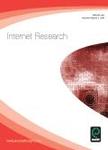版权所有:内蒙古大学图书馆 技术提供:维普资讯• 智图
内蒙古自治区呼和浩特市赛罕区大学西街235号 邮编: 010021

作者机构:Natl Text Univ Dept Comp Sci Faisalabad Pakistan Univ Oviedo Faisalabad Spain Univ Oviedo Dept Comp Oviedo Spain Univ Oviedo Dept Accounting Oviedo Spain
出 版 物:《INTERNET RESEARCH》 (因特网研究)
年 卷 期:2020年第30卷第6期
页 面:1631-1663页
核心收录:
学科分类:0810[工学-信息与通信工程] 1202[管理学-工商管理] 08[工学] 0812[工学-计算机科学与技术(可授工学、理学学位)]
基 金:Spanish Department of Science, Innovation, and Universities [RTI2018-099235-B-I00] University of Oviedo [GR-2011-0040]
主 题:Interaction Computer based learning Continued intention to use Affective involvement Cognitive involvement Design quality
摘 要:Purpose This study examines the effect of design quality (i.e. appearance, navigation, information and interactivity) on cognitive and affective involvement leading to continued intention to use the online learning application. Design/methodology/approach We assume that design quality potentially contributes to enhance the individual s involvement and excitement. An experimental prototype is developed for collecting data used to verify and validate the proposed research model and hypotheses. A partial-least-squares approach is used to analyze the data collected from the participants (n = 662). Findings Communication, aesthetic and information quality revealed to be strong determinants of both cognitive and affective involvement. However, font quality and user control positively influence cognitive involvement, while navigation quality and responsiveness were observed as significant indicators of affective involvement. Lastly, cognitive and affective involvement equally contribute to determining the continued intention to use. Research limitations/implications This study will draw the attention of designers and practitioners towards the perception of users for providing appropriate and engaging learning resources. Originality/value Prevalent research in the online context is focused primarily on cognitive and utilization behavior. However, these works overlook the implication of design quality on cognitive and affective involvement.